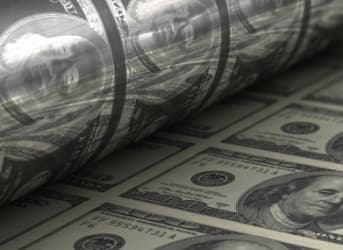The rally in oil prices by about 50 percent since April are pushing up global currencies.
The collapse of commodity prices over the past year and a half also led to a crash in the values of currencies from commodity exporting countries around the world, everywhere from Canada to Australia and from Russia to South Africa. But with oil prices having seemingly turned a corner, currencies from countries dependent on commodity exports are starting to regain lost ground.
The Australian and New Zealand dollars rose to its strongest level against the dollar in the past 10 months. The Canadian loonie is at a nine-month high.
The currencies received a jolt this week after the oil markets largely shrugged off the failed Doha meeting. With temporary oil supply outages, combined with rising demand and the gradual decline in output from U.S. shale, oil prices are firming up at about $40 per barrel. Related: Lithium War Heats Up After Epic Launch Of Tesla Model 3
Russia’s rouble is at its strongest level since November, posting steady gains since oil prices began to rebound in February. The same is true for South Africa’s rand.
Countries with currency pegs have not seen, by definition, the fluctuations in the value of their currencies. But the pressure over the past year to abandon fixed exchange rates has been unrelenting. Nigeria, for instance, is suffering from dollar shortages as it clings to its fixed rate, which has led to shortages of fuel as imports become more difficult to obtain. It is burning through cash reserves to prop up the peg.
Kazakhstan abandoned its currency peg in August of last year as oil prices plunged below $40 per barrel. The country’s cash reserves were dwindling too quickly. After the government let the currency float, the tenge suffered from an immediate devaluation. The currency lost more than half of its value in the ensuing months, but has clawed back nearly 15 percent of its value since February. Related: Worldwide Oil Production Outages Bump Up Oil Prices
Mexico's peso has regained about 10 percent over the past two months as well, but falling oil production and faltering growth have limited the currency’s rally. The central bank has sold dollars to strengthen the currency, but has not been as successful as many had hoped.
Saudi Arabia has enough cash reserves to weather several years of depressed oil prices, but it too has burned through a lot of its funds. Saudi reserves dipped below $600 billion in February, sharply down from around $740 billion from its peak in August 2014. Few expect Saudi Arabia to abandon its currency peg, however.
Another factor affecting global currencies is the Fed’s more dovish stance since December. After hiking interest rates for the first time in years, and promising multiple rate hikes in 2016, it has since backed off that position. The markets anticipate maybe one more increase in interest rates this year. The change in position has softened the dollar against an array of global currencies. Related: Forget Doha. The Fundamentals Are Moving In The Right Direction
Of course, the Fed is not acting in vacuum – lower oil prices made it more likely that the Fed would hold off on a rate increase. “There’s an argument that if you were to see renewed weakness in the oil price then perhaps the Fed will be more conservative and cautious about hiking rates,” said Simon Derrick, chief currency strategist at BNY Mellon, according to MarketWatch. And the opposite could also be true. A faster rise in oil prices could contribute to a bit of inflation, creating the conditions for more Fed action. A more hawkish stance would strengthen the dollar and beat back the rally in global currencies.
In the meantime, equities are also on the rise. Reuters reports that MSCI’s All Countries World Index, an index tracking shares in 45 countries, rose to its highest level since December this week as oil supply disruptions in Kuwait helped to push up oil prices. "It is quite amazing how oil prices have recovered from Monday's lows. That is shoring up risk appetite and pushing up commodity-linked currencies," Niels Christensen, a currency strategist at Nordea, told Reuters. "As long as oil remains above $43 a barrel, we think commodity currencies will remain supported."
ADVERTISEMENT
By Nick Cunningham, Oilprice.com
More Top Reads From Oilprice.com:
- Iran’s Dilemma: Too Much Oil And Not Enough Ships
- A Good Day For U.S. LNG As Senate Passes Energy Bill
- Oil Price Rally Unwinds As Strike In Kuwait Ends


















